If acceleration of M is a then acceleration of m is
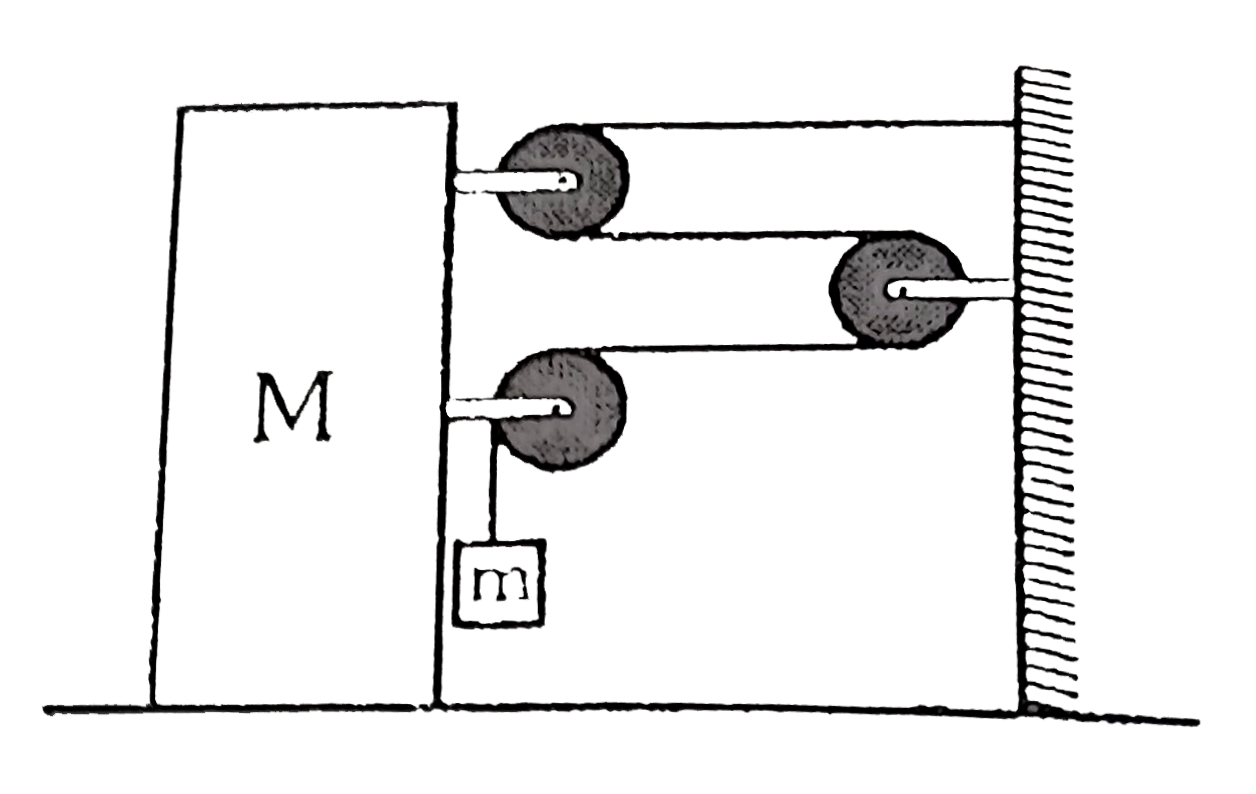
3a
a3
a
√10a
The correct Answer is:D
Net tensionon M
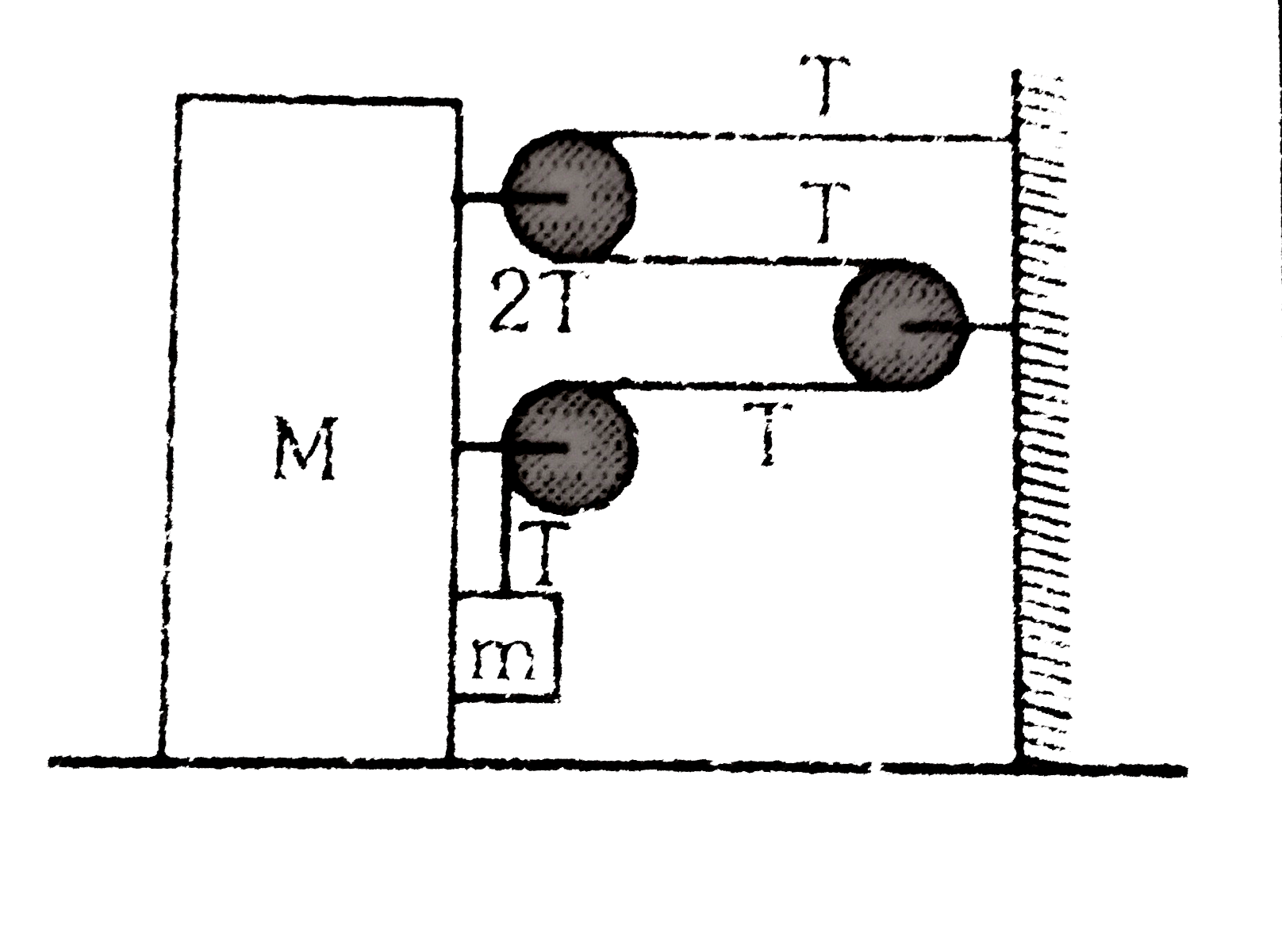 =√(3T)2+T2=√10T
=√(3T)2+T2=√10T
Now from acceleration
x Tension=constant
⇒aM(sqt(10)T)=am(T)⇒am(T)⇒am=(√10)aM=√10a
OR
Net acceleration of m 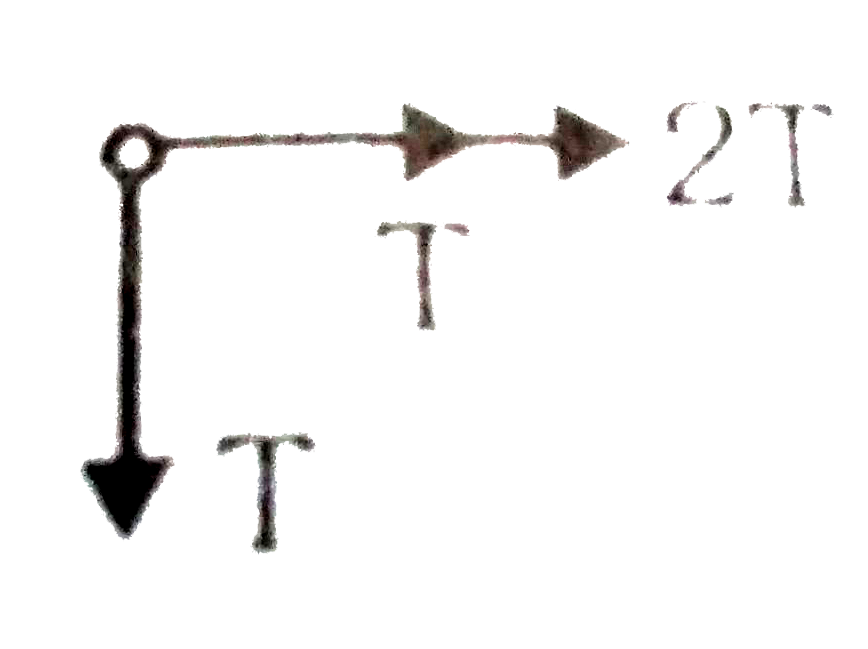 =√a2+(3a)2=√10a
=√a2+(3a)2=√10a

Topper's Solved these Questions
- BOOK - ALLENCHAPTER - NEWTONS LAWS OF MOTIONEXERCISE - EXERCISE-III28videos
NEWTONS LAWS OF MOTION
- BOOK - ALLENCHAPTER - NEWTONS LAWS OF MOTIONEXERCISE - EXERCISE-I52videos
NEWTONS LAWS OF MOTION
- BOOK - ALLENCHAPTER - NEWTON'S LAWS OF MOTION & FRICTIONEXERCISE - EXERCISE (JA)4videos
NEWTON'S LAWS OF MOTION & FRICTION
- BOOK - ALLENCHAPTER - RACEEXERCISE - Basic Maths (Wave Motion & Dopplers Effect) (Stationary waves & doppler effect, beats)25videos
RACE
Similar Questions
If the pulley is massles and moves with an upward acceleration a0. Find the acceleration of (m1)and(m2) w.r.t to elevator.
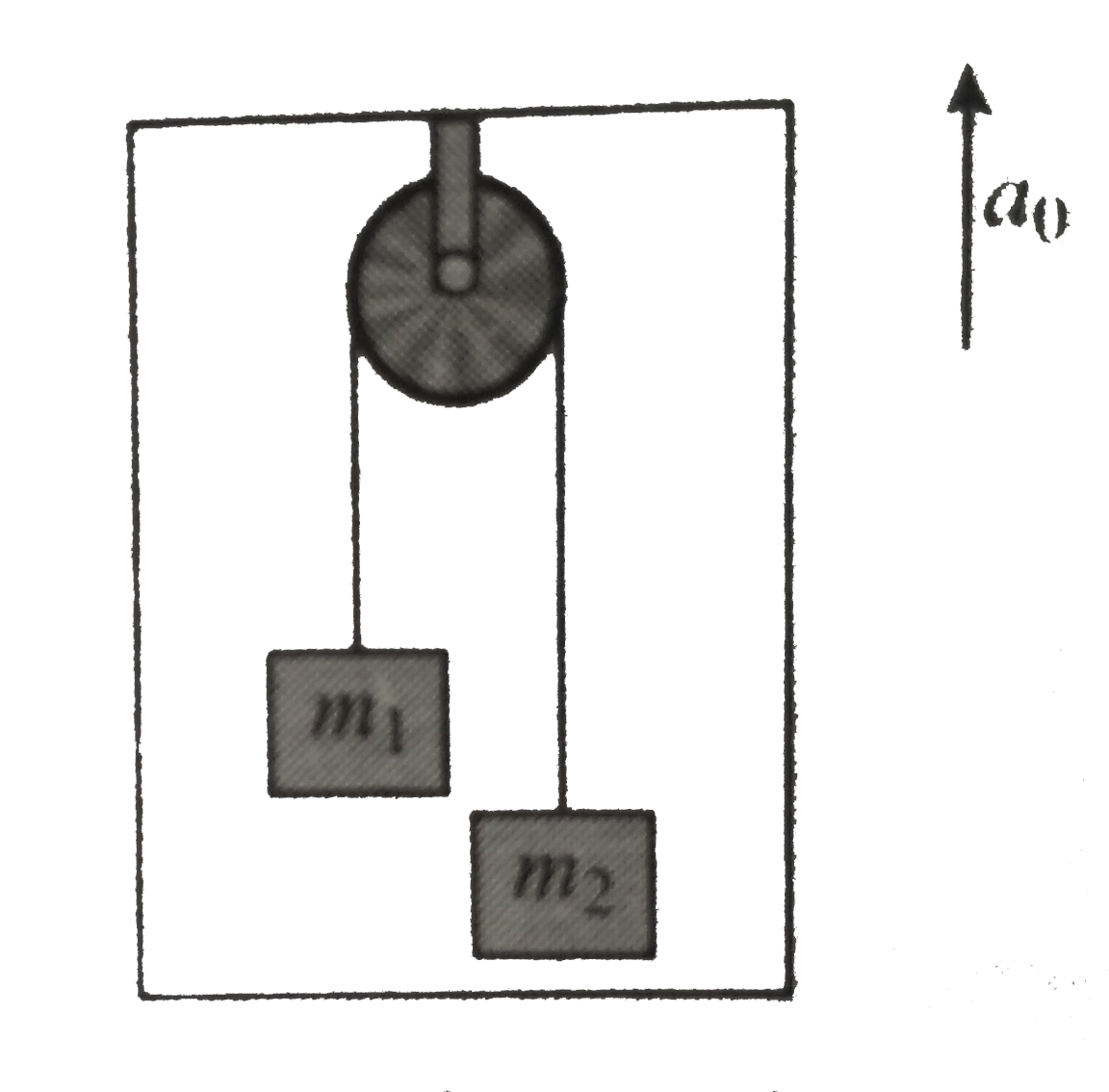 View Solution
View SolutionTwo blocks of masses m and M are placed on a horizontal frictionless table connected by light spring as shown in the figure. Mass M is pulled to the right with a force F. If the acceleration of mass m is a, then the acceleration of mass M will be
 View Solution
View Solution
Knowledge Check
- Question 1 - Select One
The acceleration of m is
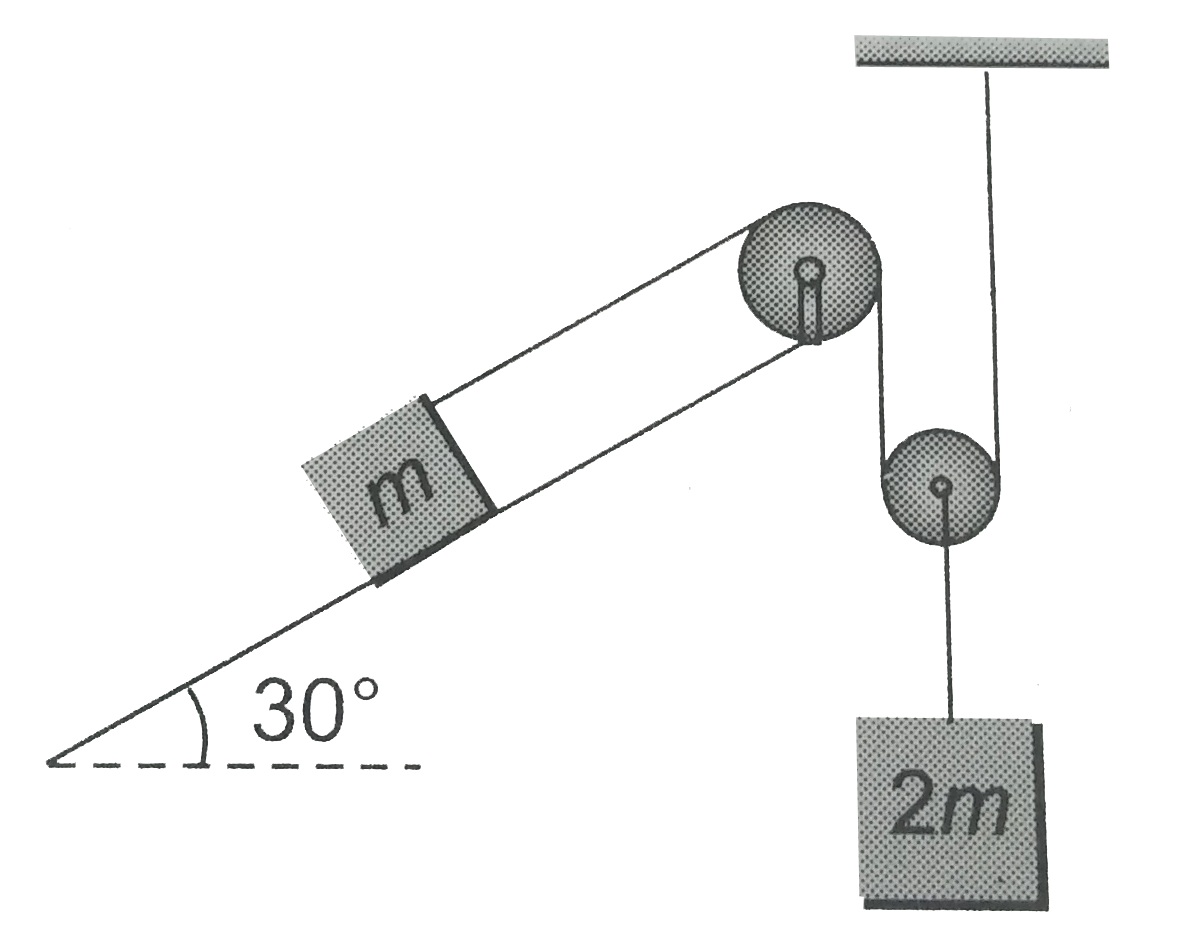 Ag/3 up the planeBg/3 down the planeC2g/3 up the planeD2g/3 down the plane
Ag/3 up the planeBg/3 down the planeC2g/3 up the planeD2g/3 down the plane - Question 2 - Select One
Two blocks of masses m1 and m2 are connected to each other with the help of a spring. If pushing force F is given to the mass m1 providing acceleration a to it, then acceleration of m2 is
 Am1a−Fm2BF−m1am2CaDF−m1am1
Am1a−Fm2BF−m1am2CaDF−m1am1 - Question 3 - Select One
Two blocks of masses m and M are placed on a horizontal frictionless table connected by light spring as shown in figure. The Mass M is pulled to the right with a force F It the acceleration of mass m is a then the acceleration of M will be .
 A(F−ma)MB(F+ma)MCFMDamM
A(F−ma)MB(F+ma)MCFMDamM
The triangular wedge shown in the figure is pulled towards left with an acceleration 1.5g. What is the acceleration of m1?
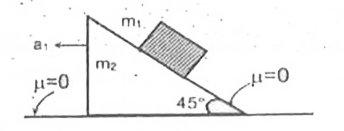 View Solution
View SolutionTwo masses m and m' are tied with a thread passing over a pulley, m' is on a frictionless horizontal surface and m is hanging freely. If acceleration due to gravity is g, the acceleration of m' in this arrangment will be :
View SolutionIn the figure given below masses m and m' are tied with a thread passing over a pulley, m' is on a frictionlesss horizontal surface. If acceleration due to gravity is g, the acceleration of m' in this arrangement will be
 View Solution
View SolutionIn the fig. given masses m and m' are tied with a tread passing over a pulley, m' is on a frictionless horizontal surface. If acceleration due to gravity is g, the acceleration of m' in this arrangement will be:-
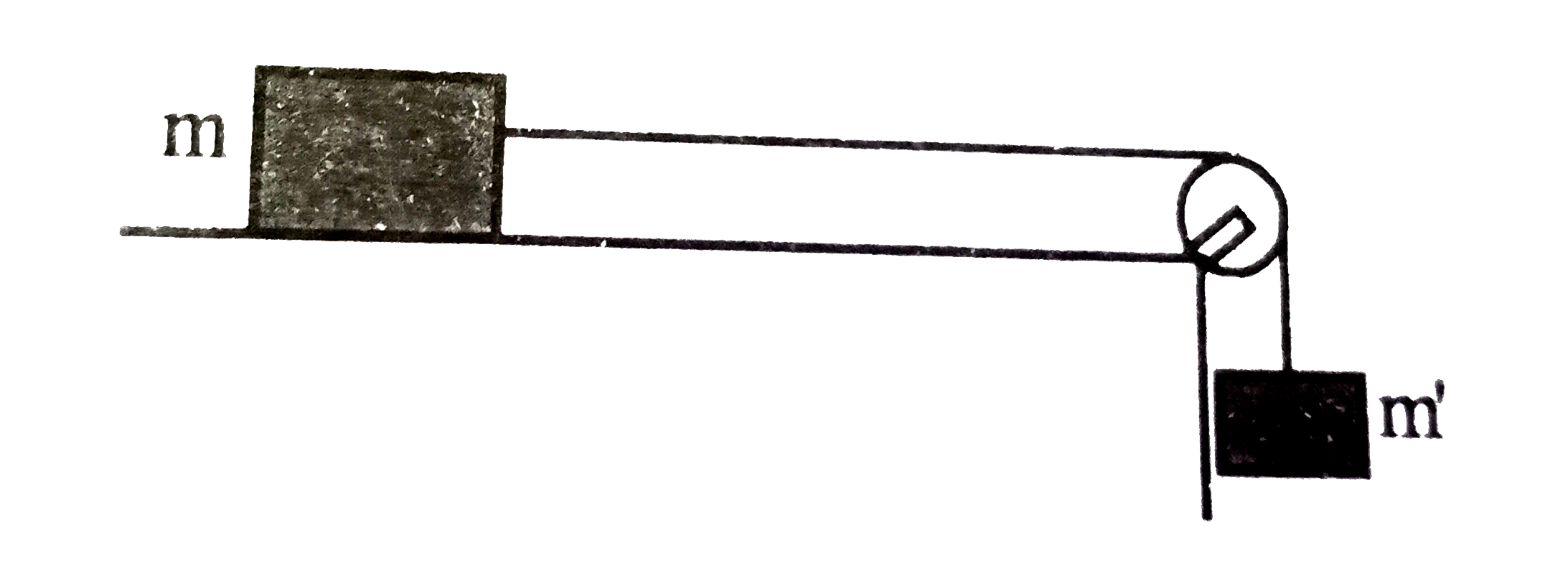 View Solution
View SolutionA body A mass m1 exerts a force on another body B of mass m2 . If the acceleration of B be a2 , then the acceleration (in magnitude) of A is
View Solution

